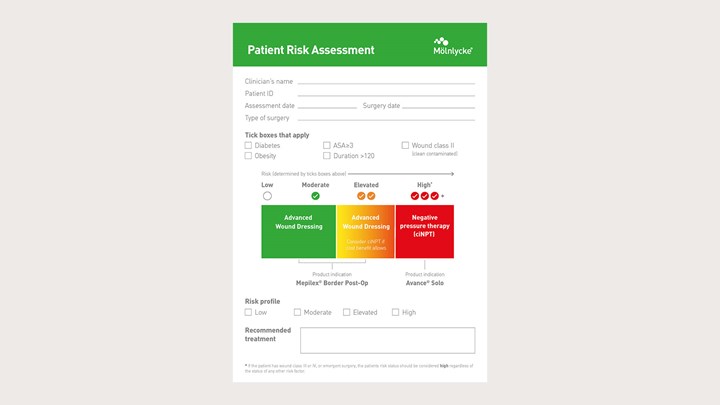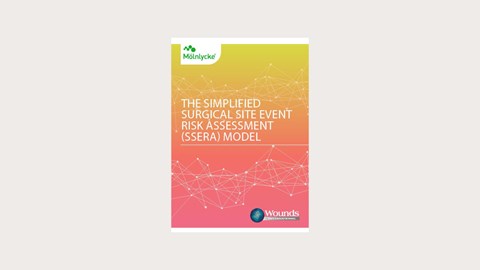Dedicated to new beginnings
Using the risk Assessment Tool by Mölnlycke.
Inadequate incision care leads to increased surgical site complications (SSCs) and additional pain for high-risk patients. It results in slower recovery times, longer hospital stays and higher costs for healthcare services that are already under pressure.
At Mölnlycke, our aim is to give patients the best chance of recovery, without complications. Which is why we developed a risk assessment tool to support healthcare professionals identify and mitigate surgical risk factors and create tailored incision care treatment pathways for patients on an individual basis

Download the pdf "Patient Risk Assessment" and use it as a guide when assessing the risk in your patients:

The Risk Assessment Tool is described in the publication “The Simplified Surgical Site Event Risk Assessment (SSERA) Model” which was published in Wounds International in 2023.
The background research and development of the risk assessment tool described in this publication were conducted by the SSERA Group, chaired by Rhidian Morgan-Jones, Consultant Orthopaedic Surgeon. The SSERA Group consists of 9 consultants paid by Mölnlycke Health Care AB. Although a Mölnlycke employee was involved in the background research, Molnlycke has not controlled (or regulated) the research carried out by the members of the SSERA Group.
Download the publication here: ”The simplified surgical site event risk assessment (SSERA) model“

Benefits
- While the identification of the obvious high-risk patient may not require the use of an assessment tool, risk assessment tools will aid in identifying patients who are not so obviously at an increased risk of SSCs and may benefit from the application of advanced therapies, such as ciNPWT
- To secure against a habituated use of advanced therapies, such ciNPWT, where there is unlikely to be a clinical benefit
Top 3 individual risk factors:
1. Obesity
2. Diabetes
3. ASA >3
Top 3 procedure-related risks:
1. Surgical urgency
2. Incision class
3. Surgery duration

Studies indexed in PubMed were identified through the following search terms:
- Surgical site infection
- Risk factors
- Surgical risk factors
- Surgical site risk assessment.
A total of 1,059 abstracts were found, from which 20 validated surgical site risk assessment tools were identified. It is through an assessment of these tools that we developed the risk assessment tool.
For clarity and ease of use, we classify risk as being either:
- Intrinsic (patient-related risk factors)
- Extrinsic (procedure-related)
'References'







Accordingly, the risk assessment tool is structured to help identifying high-risk patients, but it does not rule out the need for a more detailed consideration of risk factors relevant to the specific procedures and patients.